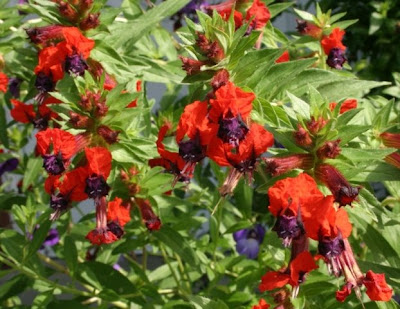
Wayne and I visited our friends Hilda and Charlie last week, and Hilda sent me home with a handful of seeds of Clerodendron trichotomum. This is one of those plants which is not as common in gardens as its several merits might suggest it would be. In our climate it's a low shrub. The white flowers are deliciously fragrant and are followed by bright blue fruits backed by the red calyx: as a result, it has a long season of interest. The foliage has the usual disagreeable scent of the family, but that scent is not noticeable until the foliage is rubbed or crushed.
Look carefully and you can make out a bit of the red of the now dried calyces and maybe even a bit of the now dark blue of the fruit.
Look carefully and you can make out a bit of the red of the now dried calyces and maybe even a bit of the now dark blue of the fruit.









